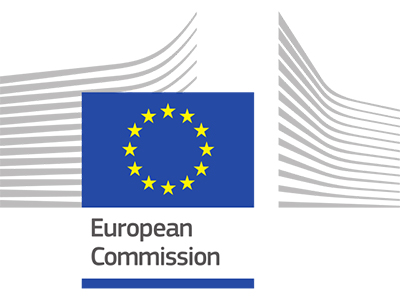Description
Reaching a record high of 32.5 gigatonnes in 2017, global CO2 emissions from fossil fuel combustion continue to increase. Adsorption is considered a viable technology to reduce CO2 emissions. Because of its lower regeneration cost, amine-modified porous silica (AMPS) is the most promising CO2-adsorbent material for replacing the decades-old liquid amine-scrubbing technology. However, a molecular-scale understanding of the CO2-AMPS adsorption process remains elusive, hindering progress in the design of improved sorbents. The EU-funded NMR4CO2 project addresses this need, using – for the first time – state-of-the-art surface-enhanced nuclear magnetic resonance to study the chemistry of acidic gases (mainly CO2) adsorbed on AMPS and of gas-solid interfaces using simulated industrial gas mixtures.
Coordinator
Coordination
Universidade de Aveiro (UA)
Partners
no
Outputs
Green Synthesis of MOF-Based Materials for Electrochemical Reduction of Carbon Dioxide
Bagheri, M; Lourenco, MAO; Dangbegnon, JK; Monti, NBD; Mafra, L; Pirri, F; Zeng, JQCovalent connectivity of glycogen in brewer's spent yeast cell walls revealed by enzymatic approaches and dynamic nuclear polarization NMR
Bastos, R; Marín-Montesinos, I; Ferreira, SS; Mentink-Vigier, F; Sardo, M; Mafra, L; Coimbra, MA; Coelho, EUnravelling the structure of CO2 in silica adsorbents: an NMR and computational perspective
Sardo, M; Morais, T; Soares, M; Vieira, R; Ilkaeva, M; Lourenço, MAO; Marín-Montesinos, I; Mafra, LValorization of Crab Shells as Potential Sorbent Materials for CO2 Capture
Pereira, D; Ilkaeva, M; Vicente, F; Vieira, R; Sardo, M; Lourenço, MAO; Silvestre, A; Marin-Montesinos, I; Mafra, LDetection of helical water flows in sub-nanometer channels
Zelenovskii, P; Soares, M; Bornes, C; Marin-Montesinos, I; Sardo, M; Kopyl, S; Kholkin, A; Mafra, L; Figueiredo, FValorisation of microalga Chlorella sp. into furans in the presence of Nb2O5 catalysts
Lima, S; García-López, EI; Krivtsov, I; Ilkaeva, M; Bornes, C; Mafra, L; Liotta, LF; Villar-Rodil, S; Paredes, JI; Marci, G; Scargiali, FImpact of pyrolysis heating methods on biochars with enhanced CO2/N2 separation and their incorporation in 3D-printed composites
Correia, I; Ilkaeva, M; Castellino, M; Bocchini, S; Novais, RM; Mafra, L; Gonçalves, NPF; Lourenço, MAOAssessing CO2 Capture in Porous Sorbents via Solid-State NMR-Assisted Adsorption Techniques
Ilkaeva, M; Vieira, R; Pereira, JMP; Sardo, M; Marin-Montesinos, I; Mafra, LUnderstanding CO2 adsorption mechanisms in porous adsorbents: A solid-state NMR survey
Pereira, D; Fonseca, R; Marin-Montesinos, I; Sardo, M; Mafra, LOne-Shot Resin 3D-Printed Stators for Low-Cost Fabrication of Magic-Angle Spinning NMR Probeheads
Pereira, D; Sardo, M; Marín-Montesinos, I; Mafra, LInvestigating trimethylphosphine oxide interactions with Bronsted and Lewis acid sites in zeolites: A comparative solid-state NMR study of wet-phase and gas-phase adsorption techniques
Bornes, C; Geraldes, CFGC; Rocha, J; Mafra, LExploring Molecular Dynamics of Adsorbed CO2 Species in Amine- Modified Porous Silica by Solid-State NMR Relaxation
Fonseca, R; Vieira, R; Sardo, M; Marin-Montesinos, I*; Mafra, L*Moisture effect on the separation of CO2/CH4 mixtures with amine-functionalised porous silicas
Pacheco, M; Bordonhos, M; Sardo, M; Afonso, R; Gomes, JRB; Mafra, L; Pinto, MLHidden CO2 in Amine-Modified Porous Silicas Enables Full Quantitative NMR Identification of Physi- and Chemisorbed CO2 Species
Vieira, R*; Marin-Montesinos, I*; Pereira, J; Fonseca, R; Ilkaeva, M; Sardo, M; Mafra, LUnravelling moisture-induced CO2 chemisorption mechanisms in amine-modified sorbents at the molecular scale
Sardo, M; Afonso, R; Juzkow, J; Pacheco, M; Bordonhos, M; Pinto, ML; Gomes, JRB; Mafra, LWhat Is Being Measured with P-Bearing NMR Probe Molecules Adsorbed on Zeolites?
Bornes, C; Fischer, M; Amelse, JA; Geraldes, CFGC; Rocha, J; Mafra, L2D Layered Dipeptide Crystals for Piezoelectric Applications
Zelenovskii, PS; Romanyuk, K; Liberato, MS; Brandao, P; Ferreira, FF; Kopyl, S; Mafra, LM; Alves, WA; Kholkin, ALSponsors












